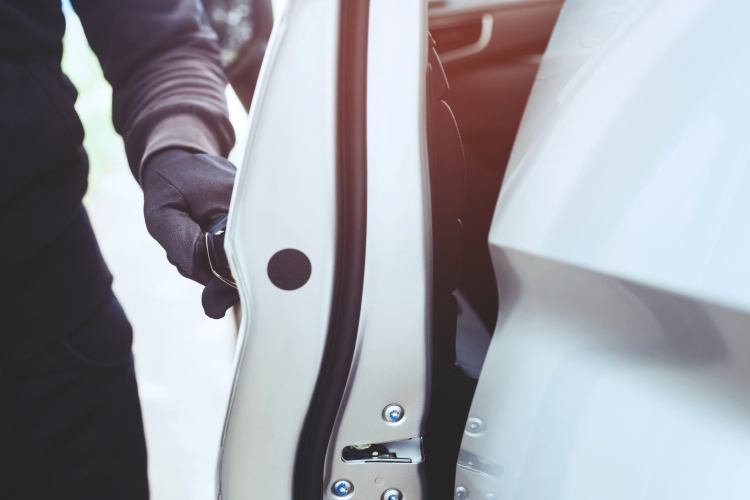Ride sharing sounds like it would involve carpooling to work with a coworker, hitching a ride to an event with a neighbor, or getting a lift to the store from a friend. However, it’s actually more like taking a taxi.
It typically involves a company, or in some cases, a nonprofit organization, that connects riders with drivers. Ride sharing, which has grown quickly in popularity over the past several years, has three components:
- You’re riding in a car, SUV, truck, or van owned and driven by a private individual.
- Typically, you pay for the ride. However, some organizations do offer free rides to older riders.
- Usually, a ride is booked using a smartphone app or a website, so some tech-related skills may be required to set up a ride.
Ride sharing is a way to get from Point A to Point B that offers an alternative to both public transportation, such as taking a bus or a train, and livery services, such as grabbing a taxi, a limo, or an airport shuttle.
How Does Ride Sharing Work?
Ride sharing companies are officially known as Transportation Network Companies, and they connect people who need rides to drivers who want to use their private vehicles to make money, often as a side job. (Free services may use volunteers.)
Ride sharing has grown in popularity over the past few years, so much so that the names of ride sharing companies such as Uber and Lyft have entered the lexicon. If you live in a mid- to large-sized city, or have friends who do, you’ve likely heard someone say, “I’m going to Uber” to a meeting, movie, restaurant, or show.
To use a ride sharing service, you will need to find a ride sharing company that operates in your area, download their app to your smartphone, and use that app to book a ride when you need one.
After you book a ride, the app will give you the name and photo of your driver, the make, model, and color of the vehicle they drive, and an approximate time for when they will reach your location. You may also be able to see the driver’s license plate number, as well as the driver’s rating, which is based on reviews from other riders.
The app will charge the credit card or other payment method you’ve put on file so you won’t have to dig through your wallet or purse for cash or plastic. Once you reach your destination, you will be able to go on your way.
Some riding sharing services offer another option that can help you save money: In keeping with the term, you can actually share your ride with others headed in the same direction. For example, Uber offers an option dubbed UberPOOL, with the tagline: “Share your ride and save.” If you select the carpool option, your driver can pick up a maximum of two additional riders, and everyone pays a lower fare—guaranteed. Note that the carpooling option is only available in some of the cities served by the company—typically larger cities, such as Atlanta, New York and San Francisco.
Ride Sharing and Safety
Ride sharing offers many benefits, including the convenience of being able to quickly summon a ride when you need one, such as when a play lets out, you have finished shopping, or the rain has started pouring—foiling your plan to walk 20 blocks.
However, there are some issues with ride sharing that you should know about before you use one of these services. Although using a ride sharing service may seem similar to using a livery service, there are major differences.
Unlike taxi and limousine drivers, ride sharing drivers typically do not have a commercial driver’s license, or the training and testing required to obtain one. And they are driving their own personal vehicles, which are not licensed or insured as commercial vehicles. That might not cause any problems, and there’s no guarantee that you would never have an issue with a commercial livery driver, but lack of oversight might mean that ride sharing passengers are taking extra risks.
For accidents involving ride sharing, being compensated for an injury can become complicated because a number of parties involved. Some larger ride sharing companies carry $1 million in liability coverage that will cover injuries to passengers. Some also carry the same amount in uninsured/underinsured motorist coverage. These coverages help to protect passengers who incur medical bills as a result of an accident in a ride sharing vehicle. It’s a good idea to check what coverages a ride sharing service has before you start riding.
Another issue with ride sharing relates to car maintenance. Consumer Affairs, a consumer news and resource center, evaluated the safety of ride sharing vehicles by examining tire tread, stating that this is “best way [to] judge the upkeep of a vehicle without asking to pop the hood.” Consumer Affairs tested tire tread on 1,200 vehicles in Chicago, Dallas, and Miami, and found that ride sharing vehicles had better tread than taxis in all cities. The bad news: Both had worse tire tread than the vehicles dedicated to personal use only.
Auto expert Lauren Fix recommends that ride sharing passengers take an active role in ride sharing vehicle safety by giving the car a once-over to check for problems such as bald tires and even keeping an eye on the road during the ride.
Some ride sharing companies have implemented technology-based safety features. For example, Uber has a “Send Status” button that allows you to send family and friends your location and ETA. With one swipe of your phone, you can text your driver’s name and license plate number, as well as your real-time map location to up to five contacts. This offers peace of mind to you and your loved ones who might worry about your safety when you’re riding with a stranger.
Ride Sharing and Older Riders
For older adults who do not drive, ride sharing may offer a convenient transportation option. In fact, some companies and nonprofits exclusively offer ride sharing to riders 60 and up. Some charge for rides, but some don’t. For example:
The Independent Transportation Network allows older adults (usually over the age of 60, but this varies by state) to join, pay dues, and schedule rides when needed. Service is available around the clock, and typically costs less than taking a taxi. It’s available in various locations (though not in every city or state).
SilverRide offers door-to-door transportation for older riders in several cities. Specially trained drivers assist riders from the door to the vehicle and then to their destination. Drivers are trained in Red Cross First Aid, CPR, and serving older adults.
If you or someone you love has handed over their car keys, ride sharing may be a great option for maintaining independence.
Disclaimer: This article is meant for information purposes only. The Hartford does not endorse or have any association with the products and/or services referenced.
READ MORE: What Causes Traffic Jams and Car Crashes?







I would like to know if you have rideshare insurance that can be added to a personal insurance policy?
Hi Lynn – Thank you for reading Extra Mile! The Hartford does not currently offer rideshare insurance.